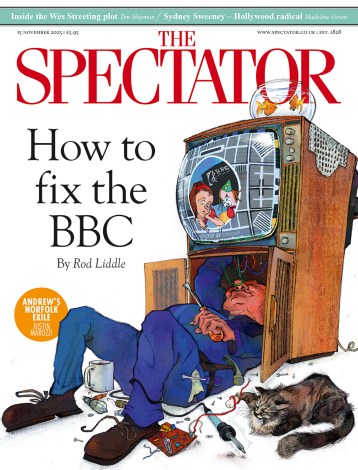Forgery in painting has enjoyed a long history of scandal and from time to time spills more ink than paint, in part because we all enjoy reading about an art expert or moneyed person getting taken in by a fake. Our pleasure derives from that cocky-smug common-sense feeling that no painting is worth the prices currently being fetched in the marketplace — Picasso’s ‘Boy with a Pipe’ sold for $104 million (£56.3 million) in 2004, and more recently Klimt’s ‘Portrait of Adele Bloch-Bauer 1’ was snapped up for a reputed record $137 million — especially when the naked eye can’t tell the difference between the original and a well-executed copy.
Forgery in the visual arts raises several interesting questions. If the eye can’t tell and the price doesn’t reflect what the eye sees, what is the buyer buying, or what does the buyer value when he pays extraordinary sums for an original painting, the forged version of which can be purchased for next to nothing? If the purchase represents a lifelong dream come true, what does the dream symbolically reveal of the dreamer? Or, if it fills a void in the buyer’s life, what was hitherto missing?
To begin with, the buyer or collector is buying what he knows about the painting: who painted it, its provenance and the esteem in which the work is held. These unseen, non-painterly aspects of the work surround it like a halo, and may include the name of the latest owner when the price is headline-grabbing right. By spending tens of millions on a painting (and not on a fleet of yachts, or an island or a prestigious building), the buyer is making a statement about his values and about values in general: on the ladder of values, the metaphysical or spiritual occupies a higher rung than the material. And, where talking is always easier than doing, and patronising the arts is often just that, the buyer lets his money talk for him when he purchases a painting whose real estate is smaller than any wall and whose true worth is not necessarily discernible to the eye. Which makes him a man of discernment, and, more importantly, known and respected as such.
Unlike the cultured person who is
usually happier with his lot, the moneyed man is never completely satisfied by his material conquests and may harbour a secret envy of the former’s accomplishment. So, in the spirit of becoming a more rounded human being, he decides to ‘invest’ millions in a painting, convincing himself that possession of the art object and becoming cultured constitute a single act. He, of course, is not innocent of the fact that the art acquisition sets him apart from his well-heeled confrères, but never admits to that motive as the underlying reason for the purchase.
If the above description is akin to a portrait of the buyer, we are introducing a category of person, who, in order to create a particular impression about himself, goes to great monetary lengths to buy what in fact cannot be bought. The appreciation of any art elevates someone to the class of the truly cultured, which is comprised of the relatively few who have been significantly touched and transformed by art. Does this mean that our buyer, like a forged painting, is an impostor? Or has he accidentally stumbled upon the true worth of his fortune, and understood that its numerical value will not alleviate him of his mediocrity? And thus, so fearing his insignificance, he purchases something of great significance, such as a costly original artwork, in a desperate attempt to associate himself with what is eternal in the work.
Perhaps he has come to the understanding that all things that come into being must pass, that only art, or created things, endure, along with the hallowed names of their creators — which makes his purchase a confession that he longs for immortality. This being the case, our portrait of the buyer is in fact a group portrait that excludes no one, the only difference being that the former has the means (the resources) to act on what is universal in the human condition: our longing for significance, which, ironically and existentially, lies outside the realm of purchase.
Not unlike the groupie, who unconditionally proffers her ovaries to the great rock musicians of our time, the art collector proffers his coffers to the world’s greatest art productions. Both are paying their highest respects to the principle of creation, and for this reason alone deserve our grudging admiration because they have the courage to act on dreads and desires that are the stuff of the species.
If we could dictate our individual destinies, the first choice of most would not be to be a rich someone, but to be a significantly creative someone, who can play God with a small ‘g’, who can create — out of nothing — that special art or music or literature that will resonate for all time. ‘To be someone’ (as Tracy Chapman sings) is a primordial longing that speaks to each and every one of us, and, in the context of our individual make-up and situation, we do what we can.
Since the buyer is constitutionally limited to the purchase of created things, and all of the above represents what he is buying or buying into, at $137 million, I would say he’s getting the deal of a lifetime.





Comments